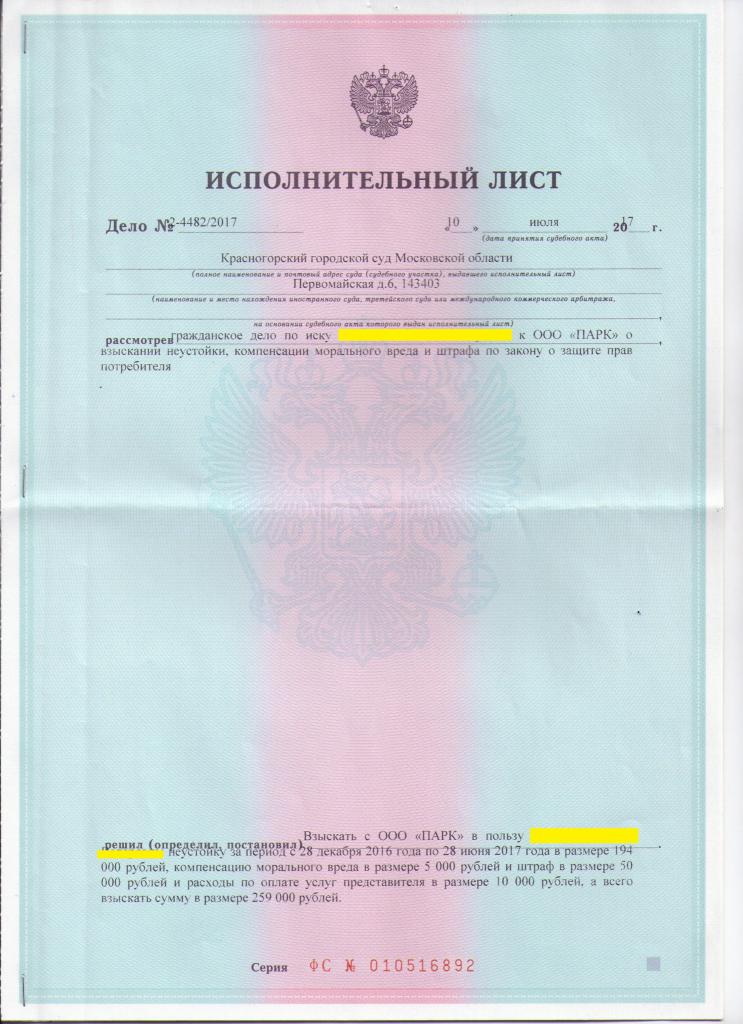Thanks to executive documents, enforcement of court decisions is enforced. Legislative acts do not contain an exhaustive concept of this paper. But on the other hand, the signs, features, filing procedure and other points are clearly defined regarding everything that the executive document is connected with. This is all detailed in the next article.
The concept
Based on the provisions of the law relating to enforcement proceedings, the following definition has an enforcement document. This is an official paper in which there is an order to perform or not to perform one or another action. It is issued by an authorized body. There is a special form for compiling a document. A distinctive feature is the imperative requirement to be enforced.
It is also important to keep in mind that an executive document is an official paper that has its own independent procedural value. It does not matter what is the basis for its issuance. The main thing is that there is a document, and on the basis of this, enforcement proceedings are instituted.

Kinds
According to article 12 of the law on enforcement proceedings No. 229-ФЗ, an enforcement document is one of the following official papers:
- A writ of execution - it is issued by an arbitration court or general jurisdiction on the basis of relevant decisions.
- The court order.
- Alimony transfer agreement certified by a notary.
- A document issued by the labor dispute committee.
- Acts of controlling authorities on debt collection. Enforcement proceedings may be initiated if there are bank statements stating that the requirements are not complied with due to the lack of the necessary monetary amounts on the account.
- Bailiff Decisions.
This list is not exhaustive. Among the executive documents may include acts of other bodies, if this is supported by the relevant regulatory framework. For example, in the fundamentals of the legislation on notaries there is an order to make notarial signs that establish obligations for the payment of funds. These penalties are committed according to the rules that are provided for by court orders.

What is not recognized by executive documents
You should be aware of which papers are not executive documents. Despite the presence of certain signs, these do not include official papers that relate to the following actions:
- Penalties levied at the scene of the offense.
- Warnings.
- Deprivation of some rights.
- Arrest.
- Seizure of things on a reimbursable basis ;.
- Correctional work.
Content
Court enforcement documents must contain the requirements set forth in law No. 229-FZ. According to him, the following information should be displayed in official paper:
- Name of the organization where the document was compiled, as well as full name specialist.
- The name of the case or materials, which are the basis for the issuance of the writ of execution, including the number and other details.
- Date of compilation, as well as entry into force.
- Information about the parties, including full name, address of the place of residence, date of birth, place of work (company name, legal address).
- A resolution that provides a prescription for a particular obligation.
- Date when the document was issued.
Exceptions to the Rules
This information is contained in Art. 13 of the law on enforcement proceedings.According to her, a derogation is possible regarding the decisions of the bailiffs, the court order and the agreement between the former spouses on alimony (certified by a notary public).
Sometimes additional data is included in the act. For example, it may contain a certain date, from the moment of which execution of enforcement documents will be carried out. This is possible if the debtor received a deferment to pay off the debt.

Statement
After the claimant receives the writ of execution, it should be transferred to the bailiffs or other persons who, by law, have the authority to execute it. In addition to him, the collector writes a statement in which he requests the application of appropriate measures to the debtor. For example, the applicant may request the arrest of property in order to prevent its implementation by the debtor in order to avoid liability. But a statement is not always required. So, you can do without it when initiating an executive case for the recovery of expenses in connection with the implementation of executive actions, fines and other fees.
Deadlines
The term of the executive document may be individual and standard. The former are defined directly in the document, and the latter are prescribed by law. According to the general rules, a writ of execution can be presented within three years.
But in some cases, the timing is different. For example, if there are requirements to return a child who is illegally detained or taken to the territory of Russia, then the presentation of the writ of execution is allowed within one year.
If the requirements relate to periodic payments, then the documents remain valid for the entire period for which they are awarded. Moreover, the requirements are subject to implementation even within three years after the writ has expired.
The requirements for a certificate of labor disputes must be fulfilled within three months.
The main terms are contained in Art. 21 laws on enforcement proceedings. If any of them is absent there, it should be sought in other legislative acts of the federal level.
With the deferrals or installments that are provided to the debtor, the terms begin to be calculated after the granted relief ends. But the fines imposed in connection with the commission of a crime, this provision does not apply.
Automated Accounting

According to Section 6.1 of the Law on Enforcement Proceedings, the bailiff service forms and maintains a database of executive documents. It contains data for the implementation of tasks to fulfill the requirements of judicial acts and other bodies in a forced manner. The relevant rules are approved by order of the chief bailiff of the country. The following information, which contains the court writ, is publicly available:
- Date when the document was issued.
- Details and name of the authority that issued it.
- Date and number of the executive case.
- The name of the debtor, as well as the legal address or full name an individual with a date of birth.
- Requirements, with the exception of requirements, the text of which is not published on the virtual network.
- Amount of debt.
- The name and address of the bailiff service department where the enforcement case is opened.
- Announcement of the debtor or his property, as well as a minor on the wanted list.
- Return of the writ of execution to the claimant.
This information is publicly available only until the end of the proceedings. But the information regarding the search (child, property, debtor) remains so until the person or property is discovered. The evidence that the bailiff's writ of execution has been returned to the claimant will remain open for another three years.
When the relevant information is entered into the database, the information is simultaneously sent to the state information system (GIS) about payments at the federal and municipal levels.
Banks, post offices and other organizations through which the funds of the Federal Treasury are transferred, send information on payments to the GIS without fail and immediately. This obligation is specified in paragraph 5 of Art. 6.1 of the law on enforcement proceedings.

Restoration of law
Execution of enforcement documents is not possible in case of damage or loss. Therefore, they must be restored. A duplicate of the document is issued. Outwardly, it is no different from the original. The only difference is the print with the words "Duplicate". Upon receipt, it must be provided to the bailiffs.
To restore the official paper lost through the fault of the bailiffs, you should send a complaint to the court. Then the specialist, leading the business, will bear legal responsibility. The document is issued by different courts, namely:
- Worldwide.
- General jurisdiction.
- Arbitration.
The application for restoration shall be submitted to the authority that issued the decision. If the applicant goes to another court, the application will not be accepted. In order not to extend the duration of the procedure, before submitting the application, you must verify the correct address of the court.

Duplicate Issue
To obtain enforcement documents (writ of execution, court order, agreement, and so on), you need to follow a certain algorithm of actions.
Firstly, it is necessary to prove the fact that the writ of execution was lost, as well as non-enforcement or incomplete enforcement of the court decision. The following documents may serve as evidence:
- Certificate from the bailiff about the absence of a document.
- A similar answer from a banking organization.
- Confirmation of the direction of the executive document to a particular organization. Having considered the complaint, the court makes a decision on the basis of which a duplicate is issued after that.
Secondly, an application is submitted in which the following data should be reflected:
- Recipient and payer information.
- Information about the court decision.
- Information about the bailiff.
- Information about the situation due to which the document was lost or damaged.
Document recovery is carried out only when its validity has not yet expired.
Is it possible not to restore the writ of execution
In practice, there are situations in which the collection of a writ of execution is suspended due to damage or loss. In this case, the applicant may reconcile with the debtor and does not apply to state authorities in order to obtain a duplicate. But in this case, you need to know that verbal agreements are often not implemented. Therefore, the collector may have different problems when receiving money without an executive document.
The presence of it gives the right to demand funds from the debtor in a compulsory manner, using all measures prescribed by law. For example, in case of refusal to repay a debt, property of a debtor may be arrested for subsequent sale and return of funds.

Conclusion
From the article it becomes clear what an executive document is, what types exist, what information is contained, as well as other nuances relating to it. This will help to better navigate the enforcement proceedings, if the need arises.
Also, the claimant is not at a loss if the writ of execution is damaged or lost due to his fault or the fault of the bailiff. even if there is an agreement with the debtor, it is better to get a duplicate. This will guarantee that the debt will be repaid. If the debtor suddenly “forgets” the agreement again, it is possible to recover funds by force.
